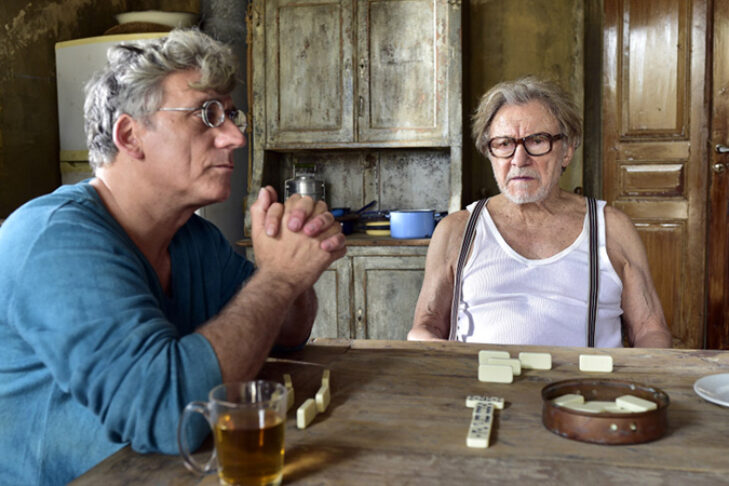Who names their kids Jacob and Esau? No Jewish parent would be that silly; you’d be essentially dooming your kids to the worst sort of sibling rivalry. I have not read Meir Shalev’s 1971 novel “Esau,” upon which the new film “Esau” is based, but a quick look at the Goodreads page shows me the main character in the novel is not actually named Esau. In the film, however, Lior Ashkenazi’s character is actually named Esau. This is not the only bad decision that went into this film.
The premise is this: After over 20 years living abroad, a 40-year-old writer returns to his family home in Israel to face his brother, who inherited their family bakery and married the woman they both loved.
The idea of a contemporary reimagining of the Jacob and Esau story is one with potential, but “Esau” strains believability to the point that its histrionics and random bursts of violence come off as laughable. It’s easy to just list off weird, bad scenes in the film, from the cheesiest “angel” effects ever to Shira Haas not quite succeeding at making what can best be described as “The Revenant” role-play not sound ridiculous.
Also looking at the book’s Goodreads page, it seems that the character of Abraham (played by Harvey Keitel) was “the proud descendant of 15 generations of Sephardic Jews” in the book. In the film, his dad is a Russian Christian who got Jerusalem syndrome and converted to Judaism (complete with a circumcision scene). Beyond the issues of Sephardi erasure, this change makes Abraham’s hostile hatred of “goys” make so much less sense. If his dad’s a convert, where does this hate come from?
On top of all these narrative problems, the film is hideously ugly to look at. The cinematography in the present-day scenes feels like someone just learned how to do color correction but had no idea how to apply it either technically or artistically. Lots of scenes attempt a sort of “Sin City”-style effect where the scene is drained of all color but for one object, except the color-draining is incomplete, leaving the actors’ skin looking splotchy and the fully-colored objects completely random. Sometimes random tomatoes in the background will be the lone objects in color. Sometimes a pencil on a desk. Why are these tomatoes or that pencil given this attention? If it’s trying to simulate colorblindness, I just wish the use of color was composed better to be less distracting. The full-color flashbacks are more coherently directed, at least, but are nothing special.
It’s always disappointing when a strong cast and well-liked source material gets wasted on weak storytelling and even worse filmmaking. With so many more satisfying films coming to on-demand and streaming this December, I can’t really recommend “Esau” to anyone.
“Esau” is now available via video on demand.






